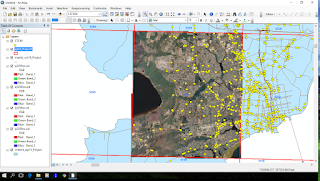Week 7 & 8 – Data Search
For
this week’s lab assignment, we were each given and a specific county in the
state of Florida. I was given Liberty County.
We needed to search for three different types of data for the county. Vector data which can be cities & towns;
publicly owned land such as parks; and lakes, rivers, and major roads. Environmental data such invasive plants, strategic
habitat areas and land cover. We also needed to show two types of Raster data
aerial photography, one of Digital Orthographic Quarter Quadrangle (DOQQ), and
one of Digital Elevation Model (DEM).
When
I first started this lab assignment I research to find out more about the
county. Assorted websites showed that Liberty County is the least populous county in Florida. As of the 2010 US Census the population was
8,365. A large part of the Apalachicola
National Forest resides in the county.
This
was not an easy assignment. The data had to be gathered from multiple locations
such as; LABINS, FGDL, FNAL and USGS. You also had to re-project the data to a
standard projection such as NAD 1983 – 2011 State Plane Florida. In addition,
the data had to be shown in such a manner on your maps that will make sense to
your audience.
The tree maps below
show the information for Liberty County, Florida, in the three data forms
chosen: Vector, Environmental and Raster.










